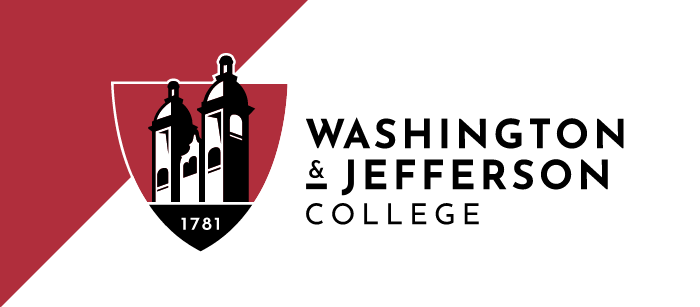WASHINGTON, Pa. (Dec. 11, 2014)—Six W&J students have taken their research, technology skills, and computer smarts to a new stratum of academia.
With the guidance of Computing and Information Studies (CIS) professor Dr. Amanda Holland-Minkley, Ph.D., the students presented research and competed in a conference hosted by the Consortium for Computing Sciences in Colleges (CCSC) at York College in York, Pa.
CCSC promotes the betterment of computer-oriented curricula in two- and four-year colleges and universities. The York conference marked the organization’s 30th Annual Consortium in the Eastern Region.
W&J students earned victories in two major areas of the conference.
Kadie Clancy ’16, a CIS major, and Natalie Smith ‘15, a Sociology major with a Gender & Women’s Studies minor, received the award for best poster in the student contest. Their research, entitled “Eyes on the Prize: Using Eye Tracking to understand Cross-Racial and Biracial Face Perception,” was a project they began in Holland-Minkley’s “Eye-Tracking Methods” Intersession class in January 2014.
Clancy and Smith had an hour-long question and answer session with undercover judges before receiving the award.
“After doing the bulk of the research and data collection last January, we continued to work on [this project] during the spring as well as this fall,” Smith said. “We were evaluated by judges from the conference committee. Kadie and I answered questions from professors, students, and other visitors. We were not aware who was a judge and who wasn’t!”
Holland-Minkley said the girls’ interdisciplinary collaboration made their project unique and exciting.
“Natalie and Kadie each brought their own disciplinary perspective to our discussions, and the collaboration hinged on their different but complementary areas of expertise,” she said. “Working with a CIS major and a Sociology major as they … extended [their project] into a conference poster was rewarding for all three of us.”
The programming teams earned triumphs as well.
Clancy participated in the programming competition with team members Rick Fincham ’16 and Shulai Yang ’18, and their team finished in the top third. CIS major Ravneet Singh ’18 and biological physics major Shiv Upadhyay ’15 comprised a team of their own and placed third overall.
“At the competition, we had to solve a given set of five problems with test input, and submit it to the system to be judged,” said Singh. “The more problems we completed, the higher our rank would be.”
Singh said that in addition to three years of experience working with Java programming language in high school, the practice problems and strategy tips provided by Holland-Minkley in the weeks leading up to the competition helped him to feel well-prepared.
The students weren’t the only ones who brought their smarts to the conference. Holland-Minkley presented a paper she composed about her “Eye Tracking Methods” course, the class that brought about Clancy and Smith’s project.
“[The course] counted as a lab credit for students, and it was particularly designed to appeal to students outside the CIS major,” Holland-Minkley explained. She said she was pleased to see the students’ projects reflect their majors in interesting ways.
“Two of the projects looked at claims from scholarly papers in marketing and advertising and collected data to test those claims. Hopefully,” she added, “[this] opens their perspective on how science might help answer questions they encounter in their studies or their careers.”
While CIS students and faculty contributed time, research, and hard work to making the CCSC conference a success for W&J, Holland-Minkley said the team gained just as much as it brought.
“By going to a conference together like this, [CIS students] get to see how they are also part of a larger intellectual community across many schools,” she said. “These experiences reinvigorate their efforts back in the classroom as they get to see the results and rewards of their hard work.”

